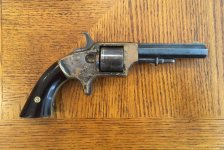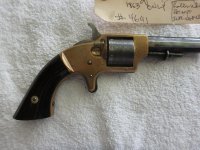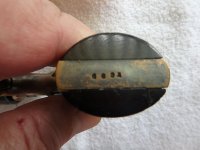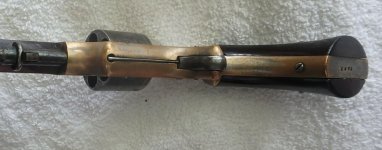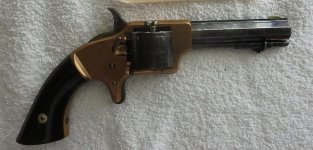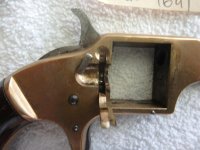GRI
Member
I recently picked up this Springfield Arms pistol. The pistol was made in 1863 in Sprigfield, MA and is in excellent condition. The mechanics are perfect, the silver plate on the frame is 33% still there, the bluing is dark but still there on the cylinder and the barrel is 90% bright blue. Most sources state that a total of 6,000 were made with the last 1,513 going to Smith and Wesson. They were a violation of the Rollin-White patent and Smith and Wesson stopped their production. Of those that went to Smith and Wesson most have the Smith and Wesson patent added to the cylinder. This one does not, but by serial, 4734, fits well within the serial range. The pistol has a solid frame with a loading gate and is a far better design then the tip up Smith and Wesson. They were a finely made pistol in .30 Rimfire that must have been very popular during the war for those who could get one. The guns are scarce and a search of the Internet revealed only two guns sold, one of which, serial 5142, sold by Greg Martin in 2003 for $1,800+ with a buyers premium.
Attachments
Last edited:

